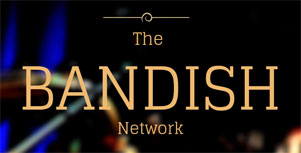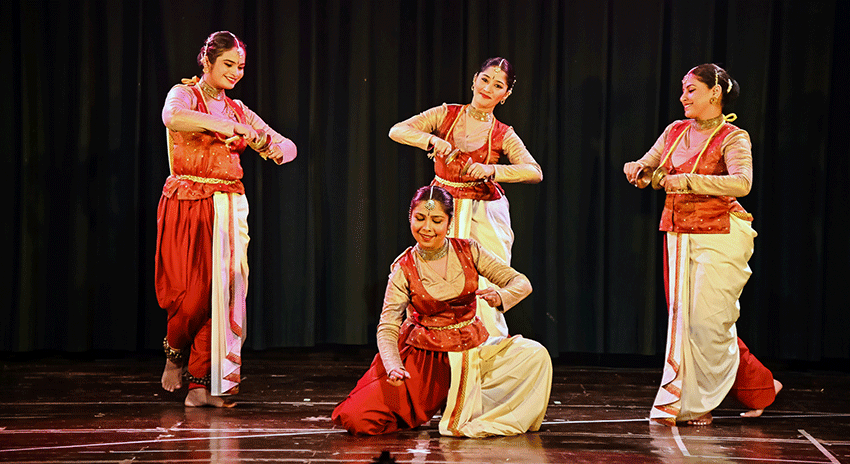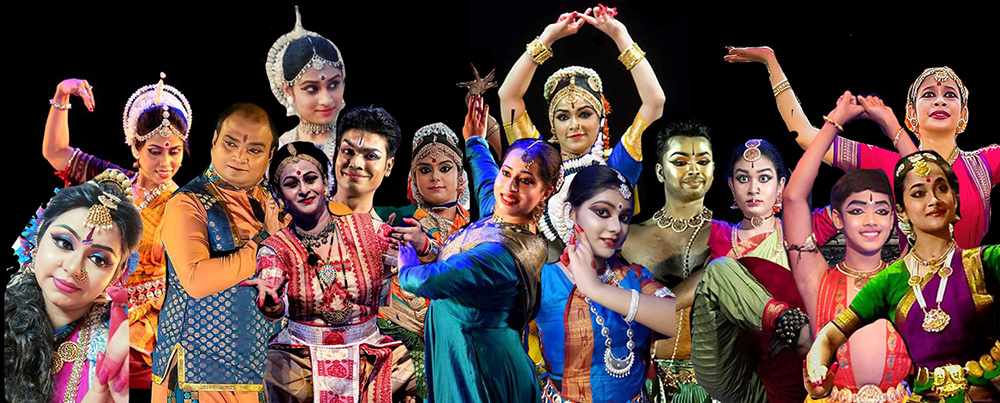World-renowned Sitar maestro Pandit Partha Bose is one of the leading Sitar exponents in India today. With a musical career based on the foundations of the traditional Guru Shishya Parampara spanning five decades, his music tugs at the hearts of the listeners and connects deeply with them. The overwhelming appreciation showered on him by both connoisseurs and critics alike over the decades place him as one of the foremost torchbearers of traditional Sitar playing by the tenets of the Maihar Gharana.
Born into a family of industrialists in Kolkata (known as Calcutta then) in 1962, little Partha’s life was all but decided. He was to study from the best schools, earn his degrees in Engineering and Management, and ultimately settle down to run the family business of timber and steel. When he started learning to play the Sitar with Pandit Monoj Shankar of Maihar Gharana at the age of six, little did the Guru know that a few years down the line, the boy would turn the pre-set “plan” of his life upside down.

Until he turned a teenager, Partha did not think much of his journey with Sitar. So, as a teenager, his announcement that he would pursue Sitar as a profession was dismissed outright by everyone as a passing fad. But the strong bond with his Guru and the concerts he accompanied him to had already revealed his calling!
This is why I am in this world
As the boy persisted with his decision, arguments with the family grew fiercer and even the Guru attempted to convince him to change his decision. Of course, they meant well but the call was so intense and unrelenting that he was convinced that this was his purpose in life and pushed back. Ultimately, despite all the challenges, he left home and distanced himself from his family identity. He supported himself by providing academic as well as music tuitions and ultimately went on to graduate from the prestigious Presidency College in Economics. Through this time, he spent most of the available time doing Riyaz under the watchful eyes of his Guruji. It was still the 1980s.
The biggest influence for Partha was, of course, his own Guru Pandit Monoj Shankar. The intensive Taalim gave the solid foundation to base a career on. Guruji’s no-nonsense no-compromise approach resulted in Partha spending 1.5 years on Paltas alone. While he was never discouraged from listening to other musicians, the sheer richness, volume and depth of the Guru’s musical tradition eliminated even the faintest desire in him to seek another teacher. Guruji too, responding to the strong grasping abilities of the boy, switched to teaching Upaj and there has been no looking back since. Their association now spans more than five decades and remains a testimony to the Guru-Shishya bonding between them.
My first notebook is still empty today

Besides the Guru, there was another strong influence in the form of Ustad Sagiruddin Khan Saheb, the renowned Sarangi player and prominent disciple of Ustad Bundu Khan of the Delhi Gharana. Although they had known each other since the age of 8, the bonding only grew stronger when the Ustad learnt that the budding musician had left home to pursue a career in his field. Besides picking up the intricacies of Khyal and Thumri from the Ustad, he also went with him on his first international tour to Bangladesh!
The hallmark of Panditji’s artistry lies in his ability to couple his technical virtuosity with deep emotional expression to create an intense musical appeal that appeals to his vast audience. His music plants itself in the listener’s minds during the Alaap, grows on them during Jod and Jhala before sending them into raptures as the Gat completes.

“While my audience may recognize popular stylistic elements of Pandit Ravi Shankar, Pandit Nikhil Bannerjee, Ustad Bahadur Khan or even Ustad Ali Akbar Khan Saheb in my playing, I strive to talk to my audience in my own language.”
Uniquely, Panditji incorporates elements from Sarod to his playing and this has opened up a whole new area of exploration for the Sitar. By using the tonal qualities of the instrument along with exploring different types of meends among other aspects, the music that emerges from this is much more emotionally intense and unique.
“When I get feedback from my audience about how my music is differently nice, I take it as a compliment and a testimony to my research and contributions in this field”
[adrotate group=”9″]
His music appeals to listeners ranging from the very knowledgeable ones who might count the matras during Gatkaari and respond to it intellectually, to the lay ones who have simply the ear and heart for music and respond to it emotionally.

His artistry has seen him regularly travel across the globe to represent India and perform at various prestigious musical festivals. In fact, his performances and accomplishments are so many that the writer is, instead, comfortable advising the reader to look them up on Panditji’s official website www.thesitarist.com. Suffice it to say that Panditji has been featured on Voice of America, BBC Radio, South German Radio, Radio Bremen and the Canadian Broadcasting Corporation among others for interviews and programmes.
Panditji has performed with famous Tabla players including Pandit Kishan Maharaj, Ustad Sabir Khan, Pandit Swapan Chaudhuri and Pandit Anindo Chatterjee among others.
[adrotate group=”9″]
“When I perform with different Tabla players, my music automatically acquires new flavours. Different elements in my repertoire are stimulated and this brings out different aspects of my musical personality”

Panditji is married to Vidushi Esha Bandyopadhyay, an accomplished Hindustani classical vocalist of Kolkata. A disciple of Vidushi Krishna Dasgupta, Acharya Biman Mukherjee and Pandit Monoj Shankar, she has carved her niche in the world of Hindustani classical vocal while being a solid pillar of support for Panditji just as much as he has been one for her.
Panditji is regularly invited internationally to conduct seminars and workshops for the clarity of thought he brings to the subject of Indian classical music. His special area of interest includes the methodology of teaching.

“It is still widely believed that failed performers become teachers. This is simply incorrect”
Panditji says that teaching is, in fact, a highly specialized art form that takes time to learn. Highlighting how there have been brilliant performers who have been excellent teachers as well as teachers who have created amazing students but have remained unknown themselves, Panditji says that it is a gross mistake to attribute failure as a performer as a reason for someone becoming a teacher. Instead, he believes that the skill of teaching is so specialized that it requires specific training in “how to teach”. In his own classes, Panditji consciously breaks down the process of learning for the student while teaching so that they in turn will be able to teach others. Panditji has several students located all over the world including India, the USA, Canada and Europe. Notably, he mentions Uwe Neumann, Ashok Nair, Aparajita Bhattacharya, Shibani Sanyal, Ananda Chanda, Viswas Chitnis and Noé Dinnerstein among others.
[adrotate group=”9″]
It is no secret that the Internet has made the world a much smaller place compared to what it used to be a mere three decades ago. YouTube, for instance, has made music concerts accessible at the push of a button within the comfort of our homes and many people debate whether this has led to reduced attendance at actual concerts. For many people these days, YouTube is the place to go to learn among many other things – Indian classical music! This begs the question: Has the importance of the teacher decreased in today’s world? Panditji replies with an emphatic No clarifying:
“When you start learning, surrender to one Guru.”
It will take a considerable number of years before you even begin to understand your subject and build your own musical identity.
YouTube could be compared to a library of reference material that can enrich an aspiring musician who has a solid base of Taleem acquired from the Guru. But the Guru will never be replaced.
Musical identity makes for an interesting topic of conversation. One might ask, for instance, what would make one artist’s identity interact agreeably with another artist’s identity. This is a very relevant question in today’s world where Fusion music has really caught on with the masses. Clearly, only an accomplished musician who has a firm and established musical identity is capable of even attempting to blend with music that is based on very different sensibilities. Panditji defines fusion music as a fusing of the artists’ musical identities – each artist doing what they do best while having considerable insight into the other art form, sharing the other artist’s vision of what they are creating and incorporating elements from it without losing their own identity. When done well, this could create a unique musical presentation that might sound like something never heard before! But it is no secret that not everyone making fusion music has the level of training, expertise and maturity necessary to execute it well. Why then is fusion music so popular today? Panditji attributes this to socio-economic factors that push musicians in their early stages of learning to attempt fusion music as well as an audience that does not always understand the underlying components that are being fused in their entirety.
[adrotate group=”9″]
In Pandit Partha Bose, one finds the meeting point of traditional musical upbringing with the modern age along with clarity of thought, expression and a flair for communication. His conviction to his calling, single-minded dedication to his Guru and hard work spanning more than five decades speaks volumes about his character. He puts it best when he says that after years of learning, hundreds of performances, scores of awards & titles, one realizes all the more that there is a lesson to be learnt every day. Pandit Partha Bose indeed holds an exalted position among the tall luminaries of Indian Classical Music.
About the Author:
 Sandeep Hattangady has pursued Tabla for more than two decades, learning from eminent Tabla Gurus including Shri Prabhakar Betrabet, Ustad Shabbir Nisar and Pt Mohan Balvalli. He has performed widely in India and the United States, playing both solo and accompanying artists such as Pt K Sridhar, Shri Anirban Dasgupta, and Dr. M Narmadha among others.
Sandeep Hattangady has pursued Tabla for more than two decades, learning from eminent Tabla Gurus including Shri Prabhakar Betrabet, Ustad Shabbir Nisar and Pt Mohan Balvalli. He has performed widely in India and the United States, playing both solo and accompanying artists such as Pt K Sridhar, Shri Anirban Dasgupta, and Dr. M Narmadha among others.
Based in Morrisville, Sandeep balances his musical interest in performing and teaching Tabla alongside his professional pursuits working as an electrical engineer in the semiconductor industry. He has co-authored the book, TIHAAI, with his Guru Shri Prabhakar Betrabet for students of Tabla and music.










